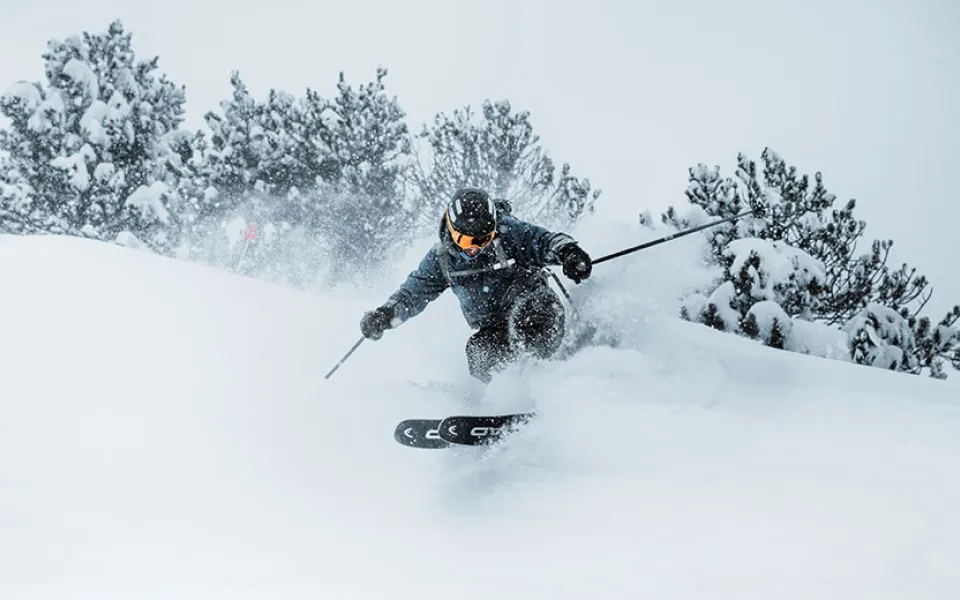Freeride skiing is an exhilarating discipline that takes skiers onto more natural and un-groomed terrain, and Ordino Arcalís has become one of the most popular destinations for this discipline in recent years. In fact, the FIS Freeride World Championships will be held in Ordino Arcalís in 2026, a big step for this sport that is all about riders showcasing their skill, creativity and precision on courses which don’t necessarily have a man-made start or end point.
That’s the definition of freeride skiing as a sport, but what are freeride skis? In this blog post, we’ll take a look at the equipment and technical aspects of freeride skis, detailing all you need to know if you’re planning to visit and try out freeride in Ordino Arcalís.
Key features of freeride skis
Freeride skis are specifically designed to handle the challenges of the off-piste terrain, which is why they differ from traditional alpine skis in a few key ways. Here, we’ll take a look at some of the key distinctions of freeride vs all mountain skis.
Wide skis for powder snow
One of the defining characteristics of freeride skis is their width, as the best freeride skis are wider in order to provide extra surface area. This helps to keep the skier on top of the snow, rather than sinking into it, all contributing to a smoother and more enjoyable ride. Many freeride skis also feature a more pronounced tip and tail rocker, which also helps in showcasing creativity over softer snow.
Durability and strength
At the same time, freeride skis need to have a good level of durability and strength. While the general shape and style is all about performance, freeride skis are often built with reinforced edges, thicker bases and sturdy cores, to help the skis to hold up when moving across the unpredictable terrain associated with this discipline.
Choosing the right freeride skis
Selecting the best freeride skis means considering various factors, such as ski length, flex and terrain preferences. The right choice will also depend on your skill level and the type of skiing you plan to do.
Ski length and flex
When it comes to freeride skis, length plays a significant role in performance. Generally, longer skis provide more stability at high speeds and better float in powder, so many freeride skiers opt for skis that are five to ten centimetres longer than their height.
Another important factor to consider is flex, which basically means how hard the skis are. Put simply, a stiffer flex means a more stable ski, which should be better at providing control in challenging conditions and high speeds. On the other hand, a softer freeride ski is both more unstable and easier to manoeuvre, so this is recommended for more experienced freeride skiers. Of course, the terrain you’ll be skiing on plays a factor too, as you might want a more stable ski underfoot if exploring more unpredictable conditions.
Tips for freeride skiing
Let’s finish with a few general tips for freeride skiing. Firstly, on a practical level, know that strong balance and adaptability are essential in this sport, so practice making fluid turns, keeping your weight centred, and using your legs to absorb changes in terrain. If you want to become a top rider, freeride lessons at Ordino Arcalís are well worth considering, in order to perfect these techniques.
Also keep in mind that safety should come first with freeride skiing. So, never ski alone in backcountry areas and always have a partner who could assist in case of an emergency. And, know that there are venues like Ordino Arcalís where it’s possible to enjoy the perfect un-groomed terrain needed for freeride, without having to venture far from your ski holiday accommodation.
